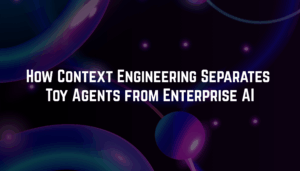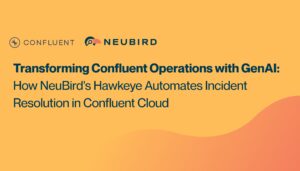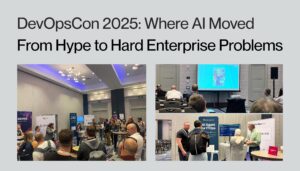Breaking the CrashLoopBackOff Cycle: How Hawkeye Masters Kubernetes Debugging
How SRE teams are revolutionizing application debugging with Hawkeye
The PagerDuty alert comes in at the worst possible time: “Maximum pod_container_status_waiting_reason_crash_loop_back_off GreaterThanThreshold 0.0”. Your application is caught in the dreaded CrashLoopBackOff state. While your CloudWatch logs capture every crash and restart, the sheer volume of error data makes finding the root cause feel like solving a puzzle in the dark.
The Traditional Debug Dance
In a modern Kubernetes environment, SREs have powerful tools at their disposal. CloudWatch diligently captures every log line, metrics flow into Prometheus, and your APM solution tracks every transaction. Yet, when faced with a CrashLoopBackOff, these tools often present more questions than answers.
A typical investigation starts with CloudWatch Logs, where you’re immediately confronted with thousands of entries across multiple restart cycles. You begin the methodical process of piecing together the story: the first crash occurrence, any changes in error messages between restarts, and potential patterns in the pod’s behavior before each failure.
Next comes the metrics investigation in Prometheus. You pull up graphs of memory usage, CPU utilization, and network activity, looking for correlations with the crash timing. Everything looks normal, which is both reassuring and frustrating – no obvious resource constraints to blame.
Then it’s time to dig deeper. You pull up the Kubernetes events, checking for any cluster-level issues that might be affecting the pod. You review recent deployments in your CI/CD pipeline, wondering if a configuration change slipped through code review. Each step adds more data but doesn’t necessarily bring you closer to a resolution.
Why CrashLoopBackOff Defies Traditional Analysis
What makes CrashLoopBackOff particularly challenging isn’t a lack of data – it’s the complexity of piecing together the right narrative from overwhelming amounts of information. Modern observability tools give us unprecedented visibility into our systems, but they don’t inherently understand the relationships between different signals.
A single CrashLoopBackOff incident typically spans multiple dimensions:
The application layer might show clean logs right up until the crash, missing the crucial moments that would explain the failure. System metrics might appear normal because the pod isn’t running long enough to establish baseline behavior. Kubernetes events capture the restarts but not the underlying cause.
Even more challenging is the ripple effect through your microservices architecture. A crashing service can trigger retry storms from dependent services, creating noise that obscures the original problem. Your observability tools faithfully record every detail, but understanding the cascade of events requires deep system knowledge and careful analysis.
Hawkeye: Bringing Context to Chaos
Here’s how Hawkeye transforms this investigation:
The Hawkeye Difference
What sets Hawkeye apart isn’t just its ability to process logs faster than humans – it’s how it understands the complex relationships between different parts of your system. When Hawkeye analyzes a CrashLoopBackOff, it doesn’t just look at the logs in isolation. It builds a comprehensive narrative by:
Simultaneously analyzing data across multiple observability systems and environments. While humans must context-switch between different tools and mentally piece together timelines, Hawkeye can instantly correlate events across your entire observability stack. What might take an SRE hours of checking CloudWatch logs, then Prometheus metrics, then deployment histories, and then trying to build a coherent timeline, Hawkeye can process in seconds by analyzing all these data sources in parallel.
Analyzing the impact on your entire service mesh. Instead of just focusing on the crashing pod, Hawkeye maps out how the failure ripples through your system, helping identify whether the crash is a cause or symptom of a broader issue.
Correlating deployment changes with system behavior. Hawkeye doesn’t just know what changed – it understands how those changes interact with your existing infrastructure and configuration.
Read more: While CrashLoopBackOff errors are frustrating, they’re just one aspect of Kubernetes operations that can be improved with AI. Learn how to transform your entire Kubernetes monitoring approach with Grafana and AI.
Real World Impact
For teams that have integrated Hawkeye into their operations, the transformation goes beyond faster resolution times. Engineers report a fundamental shift in how they approach application reliability:
Instead of spending hours reconstructing what happened during an incident, they can focus on implementing Hawkeye’s targeted recommendations for system improvement. The mean time to resolution for CrashLoopBackOff incidents has dropped from hours to minutes, but more importantly, repeat incidents have become increasingly rare as Hawkeye helps teams address root causes rather than symptoms.
Implementation Journey
Integrating Hawkeye into your Kubernetes environment is straightforward:
- Connect your existing observability tools – Hawkeye enhances rather than replaces your current monitoring stack
- Configure your preferred incident response workflows
- Review Hawkeye’s incident analysis, drill down with questions, and implement recommendations.
Scale your team and improve morale by transforming your approach to application debugging from reactive investigation to proactive improvement. Let Hawkeye handle the complexity of crash analysis while your team focuses on innovation.
Follow
Hawkeye ![]()
Written by







